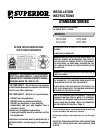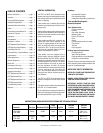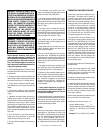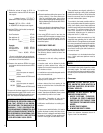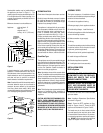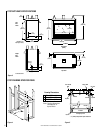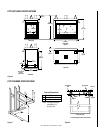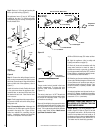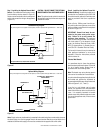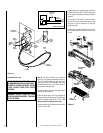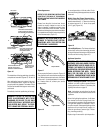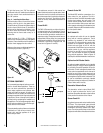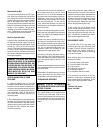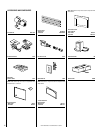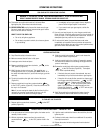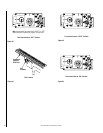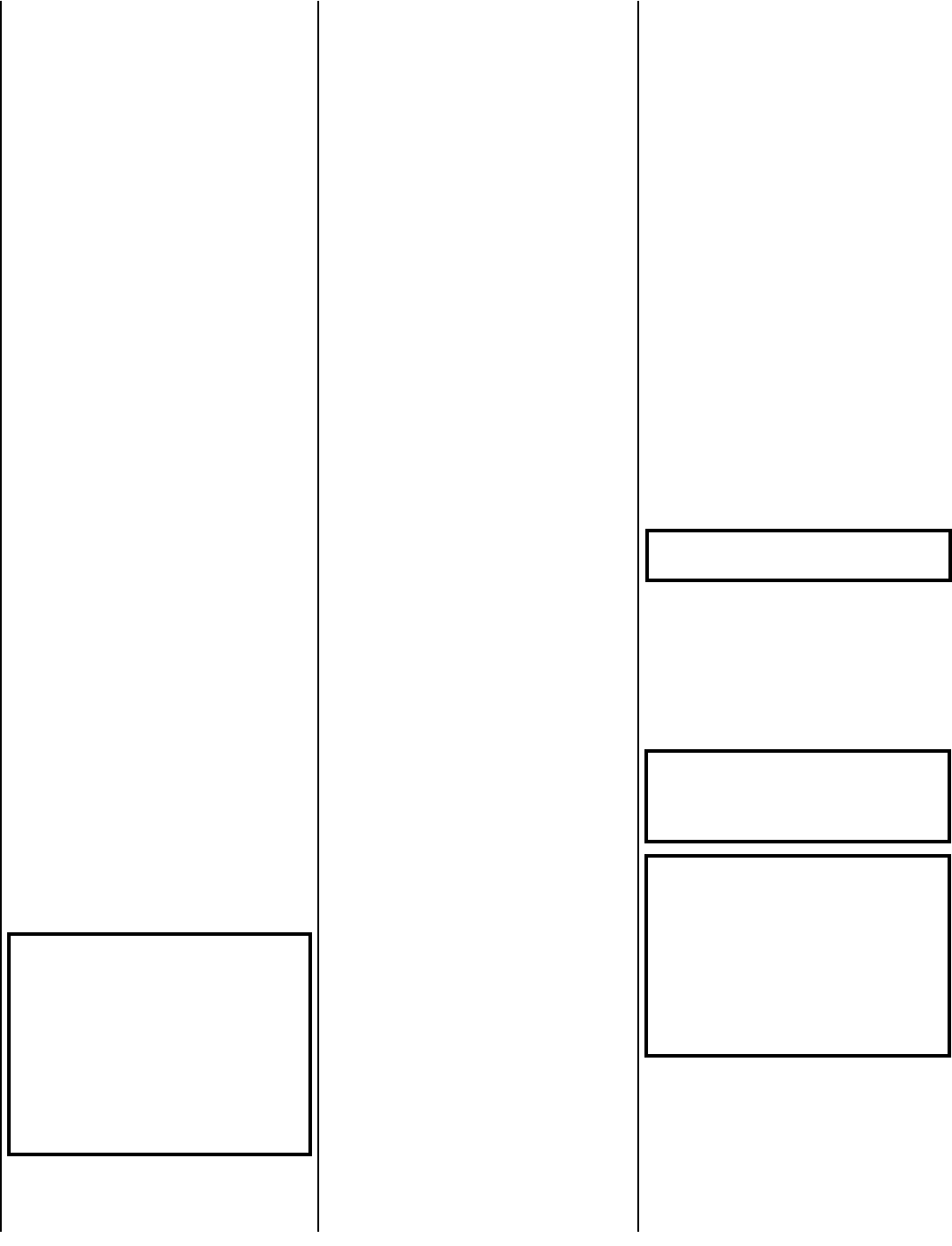
NOTE: DIAGRAMS & ILLUSTRATION NOT TO SCALE.
4
Example:
CFST/PF heater 34,000 BTU/Hr
Gas appliance #1 32,000 BTU/Hr
(water heater)
Total = 66,000 BTU/Hr
* Do not include direct-vent gas appliances.
Direct-vent is sealed combustion and draws
combustion air from the outdoors.
4. Compare the maximum BTU/Hr the space
can support with the actual amount of BTU/
Hr used.
_________ BTU/Hr
(max. the space can support)
_________ BTU/Hr
(actual amount of BTU/Hr used)
Example:
40,960 BTU/Hr
(max. the space can support)
66,000 BTU/Hr
(actual amount of BTU/Hr used)
The space in the above example is a confined
space because the actual BTU/Hr used is more
than the maximum BTU/Hr the space can sup-
port. You must provide additional fresh air.
WARNING: IF THE AREA IN WHICH THE
HEATER MAY BE OPERATED IS SMALLER
THAN THAT DEFINED AS AN UNCON-
FINED SPACE OR IF THE BUILDING IS OF
UNUSUALLY TIGHT CONSTRUCTION,
PROVIDE ADEQUATE COMBUSTION AND
VENTILATION AIR BY ONE OF THE METH-
ODS DESCRIBED IN THE NATIONAL FUEL
GAS CODE, ANSI Z223.1 1992, SECTION
5.3 OR APPLICABLE LOCAL CODES.
Your options are:
a.Rework equations adding the space of ad-
joining room(s). If the extra volume pro-
vides an unconfined space, then remove
door or add ventilation grills between rooms.
Refer to National Fuel Gas Code, ANSI Z223.1
1992, Section 5.3.
b.Vent room directly to the outdoors. Refer to
National Fuel Gas Code, ANSI Z223.1 1992,
Section 5.3.
If the actual BTU/Hr used is less than the
maximum BTU/Hr the space can support, then
the space is an unconfined space. You will
need no additional fresh air ventilation for an
unconfined space.
LOCATION OF FIREPLACE
Carefully select the best location for installa-
tion of your CF series Unvented Room Heater.
The following factors should be taken into
consideration:
• Clearance to side wall, ceiling, woodwork
and windows.
• Location must not be affected by drafts
caused by kitchen exhaust fans, return air
registers for forced air furnaces/air condition-
ers, windows or doors.
• Installation must provide adequate ventila-
tion and combustion air.
• Do not install these series heaters in a
sleeping room or bathroom.
• Never obstruct the front opening of the
heater or restrict the flow of combustion and
ventilation air.
• This appliance may be installed in an after-
market* manufactured (Mobile) Home, where
not prohibited by state or local codes.
*Aftermarket: Completion of sale, not for
purpose of resale, from the manufacturer.
• Minimize modifications to existing con-
struction.
To ensure even heat distribution, it is best to
position the heater centrally within the rooms.
Make sure there is adequate ventilation where
the heater is installed. The gas appliance will
shut off if the oxygen level falls below 18%.
The appliance should be mounted on a fully
supported base extending the full width and
depth of the unit. The appliance may be located
on or near conventional construction materials.
However, if installed on combustible materials,
such as carpeting, vinyl tile, etc., a metal or
wood barrier covering the entire bottom sur-
face must be used.
If the appliance is to be elevated above floor
level, a solid continuous platform must be
constructed.
WARNING: MAINTAIN MINIMUM CLEAR-
ANCES.
Do not install in the vicinity of gasoline or other
flammable liquids. The heater must be kept
clear and free from these combustible materi-
als and may not be located near where they are
stored.
Clearances
WARNING: DO NOT INSTALL CF SE-
RIES UNVENTED ROOM HEATERS IN
SLEEPING QUARTERS, OR IN RECRE-
ATIONAL VEHICLES.
WARNING: DO NOT INSTALL THE CF
UNVENTED ROOM HEATER:
• WHERE CURTAINS, FURNITURE,
CLOTHING OR OTHER FLAMMABLE
OBJECTS ARE LESS THAN 42" FROM
THE FRONT OF THE UNVENTED ROOM
HEATER.
• IN HIGH TRAFFIC AREAS.
• IN WINDY OR DRAFTY AREAS.
Ensure the minimum clearances shown in
Figures 1 and 2
are maintained.
These appliances are uniquely suited for in-
stallations requiring a utility shelf positioned
directly above the fireplace. Utility shelves like
these are commonly used for locating televi-
sion sets and decorative plants.
To provide for the lowest possible shelf sur-
face, combustible materials used to support a
utility shelf directly above these appliances
should be positioned just above the appliance
top spacers. The minimum height from the
base of the appliance to the underside of
combustible materials used to construct a
utility shelf is 42 ³⁄₄” (1086 mm).
2.Divide the volume of space by 50 ft
3
to
determine the maximum BTU/Hr the space
can support.
______ (volume of space – ft
3
)/ 50 ft
3
=
(Maximum BTU/Hr the space can support)
Example: 3072 ft
3
/ 50 ft
3
= 40.96
or 40,960 BTU/Hr the space can support.
3.Add the BTU/Hr of all the fuel burning appli-
ances in the space.
Vent-Free heater _______ BTU/Hr
Gas appliance #1* _______ BTU/Hr
Gas appliance #2 + _______ BTU/Hr
Total = _______ BTU/Hr



